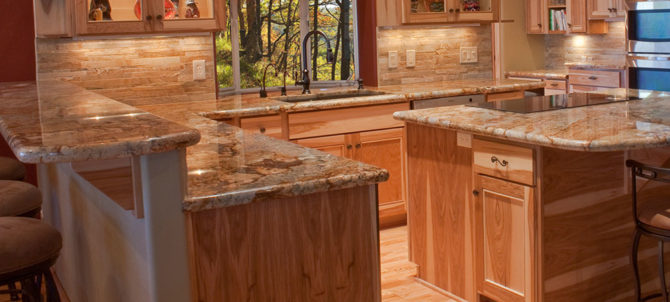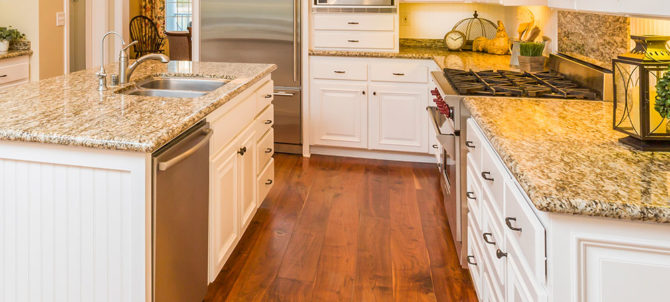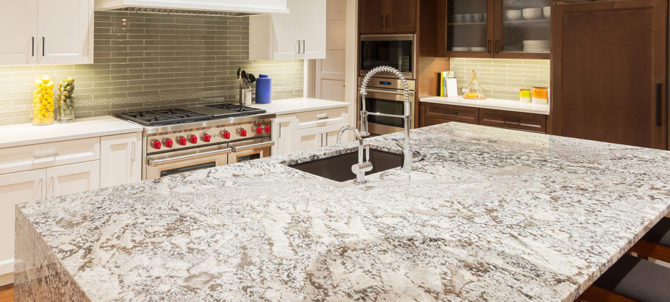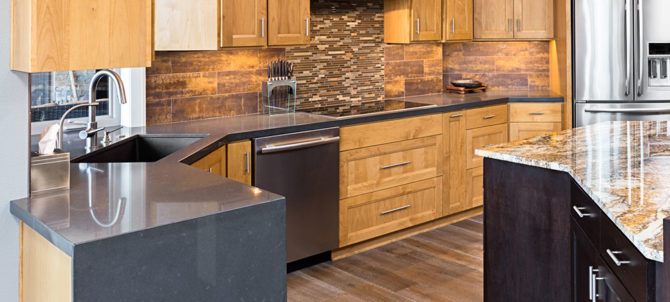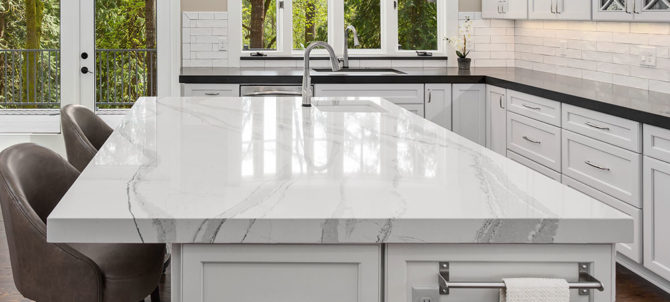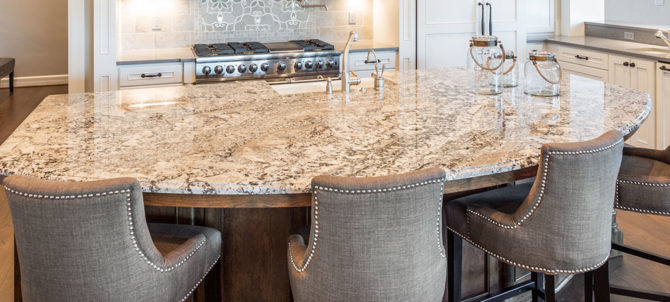
Although granite countertops are attractive, long-lasting, and in style, you should know it’s normal to get bored of them. The good thing is that you can update them if you find them too busy, too dark, or simply don’t match your current design style.
To help you out, here are things you can do if you don’t like the current color of the countertops:
Paint the countertops
Consider using a granite countertop paint kit, available online and at home improvement stores, if you are content with how your kitchen is set up but would want a different look without having to pay more for something like a new Corian countertop.
Primer, paint, and epoxy are typically included in countertop resurfacing kits; some kits also include all the sanders, rollers, brushes, and other equipment you’ll need for the project.
Make sure that you adhere to the instructions included with your particular kit, however, most kits suggest taking actions akin to these:
First, use a roller to apply a coat of primer. After letting it dry, apply a second layer of primer.
Using a fresh roller brush, apply the stone coat. Use a smaller brush for difficult-to-reach and detail areas, such as the areas around sinks, fixtures, and edges.
You should use a rotary sander to smooth the stone coat after it has dried. A shop vacuum or filtration system helps get rid of dust.
You should then dust or vacuum the surface until it is clear of all dust and debris.
After applying a second coating of stone coat and allowing it to dry, resand.
As instructed, apply the sealant coat and let it dry. It’s crucial to give this last coat enough time to cure completely before handling or causing any disturbances, as doing so may result in smudges and imperfections that are difficult to fix.
After the sealant application has dried completely, remove the protective tape.
To ensure the countertop is polished, you should apply caulk to all edges, walls, sink lines, and other required locations.
Tile over the countertops
You can tile over a granite countertop that is perfectly level, square-edged, and devoid of embellishments, curves, or a waterfall edge. Your countertops must be level and sturdy so the tiles and grout do not fracture after installation.
Water-resistant, long-lasting, and food-safe porcelain, ceramic, or comparable tiles are what you should install.
To stop water, stains, and bacteria from growing, choose non-absorbent, food-safe, resin-based, and stain-repellent grout.
Unless you choose your tile, grout, and design choices wisely, tiling over existing granite counters might make your kitchen appear less attractive, so be cautious about how you go about it.
Tile is often thought of as a less attractive, cheaper countertop material. Nevertheless, it can refresh an outdated countertop and improve how your kitchen expresses your taste.
You can rough up and scratch your countertops with a power sander and high-grit sandpaper. For the thinnest mortar to adhere to them, they must possess a particular texture.
Alternatively, you can buy and cut a ¼-inch-thick cement or tile backer board to precisely fit over your counters and glue it to the granite surface if you don’t want to install tile directly on your worktops.
For the best outcome, work with experienced contractors who will not only correctly install the tiles but also advise you on the best ones.
Install laminate sheets on your countertops.
Consider covering your granite counters with laminate sheets if ready for a new look. Though laminate comes in various solid and decorative patterns, it is rarely as attractive as granite, so you’ll need to weigh the pros and cons of making the switch.
Laminate is also far less durable than granite, so you must treat your countertops more carefully if you decide to switch.
You want the granite to appear dull, so use an orbital or belt sander to remove the top layer.
Using a vacuum, clean the surfaces and remove any last bits of dust and grime.
Measure the top, sides, borders, and backsplash (if appropriate) of each countertop surface you plan to cover.
You can install any style and color of laminate, including precut laminate strips.
Use contact paper or countertop film.
Cover the granite surface with contact paper or countertop film for a less expensive, more transient upgrade that will still transform your granite worktops.
Countertop film, which resembles vinyl flooring more than typical contact paper, is more robust, resilient, and thicker than contact paper, which is less expensive and more straightforward to cut.
Both are available in various hues and designs, including marble-like patterns.
While this is the case, you should remember that this is a temporary fix that will alter the appearance for a while; it will require gentle maintenance and replacement as it wears out.
After deciding on and buying the contact paper you want, spread it across your counters and let it flatten.
Cut it to size with a straightedge, sharp scissors, or rotary cutter, then align it with your countertops to ensure a good fit.
You should peel one corner and edge first to expose the adhesive side.
Attach this side to your countertop piece by piece, working slowly and deliberately around the countertop’s surface, beginning at one edge.
As you proceed, you can smooth the film using a squeegee or wide plastic putty knife to eliminate bubbles and guarantee a snug fit.
Parting shot
If you don’t like the current look of your granite kitchen countertops Raleigh, don’t worry; there are several ways to improve their look.
You only need to choose one of the given ways and run with it. You can make some of the changes yourself, but let a professional help you for the best outcome.

